|
Location:
Mgarr, North of Naxxar, Malta. |
Grid Reference:
35.92� N 14.38� E |
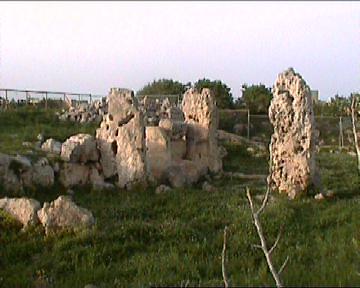
 Skorba:
(Temple Complex).
Skorba:
(Temple Complex).
Having
already seen several of the other temples on Malta, the first impressions of
this site are undeniably disappointing. The remains of one of the oldest
temples on the islands are barely distinguishable from a pile of stones.
At present, they lie caged and neglected beside the
sprawl of development, waiting patiently for the hand of the restoration
team. (Open to the public on request)
(Click
here for map of the site)
This temple was discovered in 1925 by
Sir Temi Zammit, Malta�s first director of museums. Remains were first
discovered in Mgarr after a mound of earth was sighted in a field. It
was called Ta� Hagrat and as with Malta�s other temples, which are
generally found in pairs, this
too had a partner - Skorba temple lying just one kilometre away.
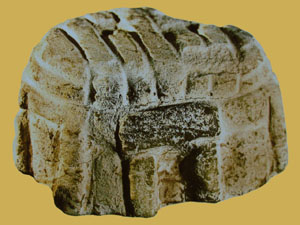 The site was thought to be of minor importance even though distinctive
pottery was found. In the early 60s however, further work was carried
out by David Trump - curator of archaeology between 1958 and 1963 at the
then National Museum of Malta - who uncovered a unique find: a small
model of a temple made from limestone (right). The site was thought to be of minor importance even though distinctive
pottery was found. In the early 60s however, further work was carried
out by David Trump - curator of archaeology between 1958 and 1963 at the
then National Museum of Malta - who uncovered a unique find: a small
model of a temple made from limestone (right).
He dated the larger temple between 3600 and 3000 BC while the smaller
one at 3300 and 3000 BC. A flight of steps between the two temples is
thought to have provided access to an oracle hole at ceiling level in
the inner apse of the larger temple. Skorba was excavated in the 1960s,
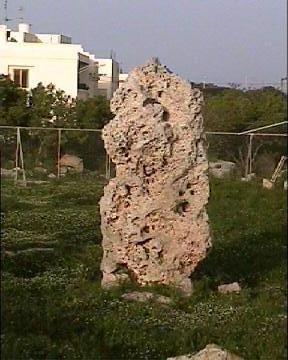
Although the temple is now greatly dilapidated, the Menhir still
stands directly in front of the
entrance.
At Skorba, a typical three-apsed
temple was built in the Ggantija phase (3600 � 3200 BC), replacing a
village that had been inhabited since the Ghar Dalam phase (5000 � 4300
BC). Remains include the stone paving of the entrance passage, with
perforations to carry libation offerings, the torba floors of the apses,
a 3.90 metre high slab of coralline limestone, and a step covered with
pitted decoration.
The use of globigerina limestone in
the construction of the doorway leading to the inner apse of the West
temple is noteworthy since globigerina is not present in the immediate
surface geology around Skorba. The nearest source is about a mile away.
To transport blocks weighing more than one tonne across a mile of open
country must have been an extraordinary feat.
A second temple was added to the east
in the Tarxien phase (3150 � 2500 BC). It was in a more ruinous state
when found, but originally consisted of four apses and a central niche.
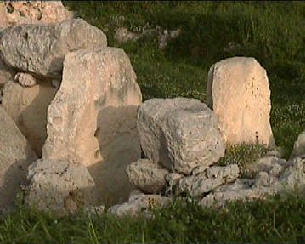
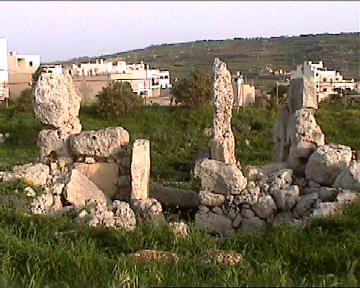
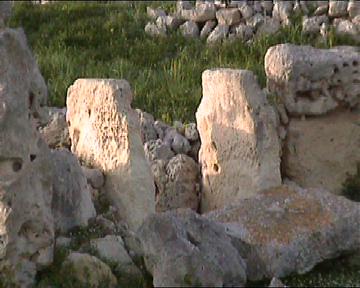
The alter is still visible in the middle.
Skorba was occupied long before the
temples were built. The earliest structure identified on the site is an
almost straight length of wall, of which 11m were exposed. This was
dated to the Ghar Dalam phase (5000 � 4300 BC). Among the domestic waste
found on its north side, which included charcoal and carbonised grain,
were several fragments of daub, accidentally baked. In the field east of
the Tarxien phase temple, a much more extensive structure came to light.
It consisted of two rooms dated to the Red Skorba phase (4400 � 4100
BC). The irregularity of the floors and the absence of hearths seem to
preclude the site�s domestic use. The group of figurines found in the
northern room, now on display at the National Museum of Archaeology,
suggest that this building had a religious function. It may be
considered then a true predecessor of the temples which first appeared
some centuries later.
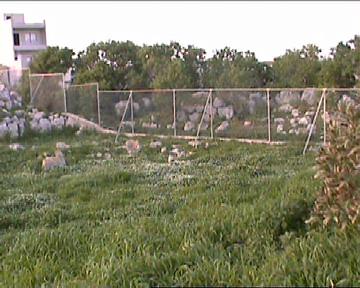
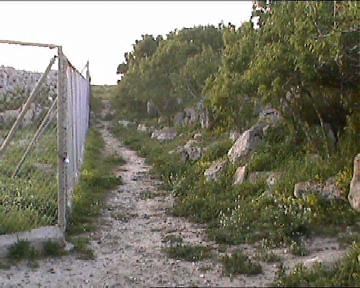
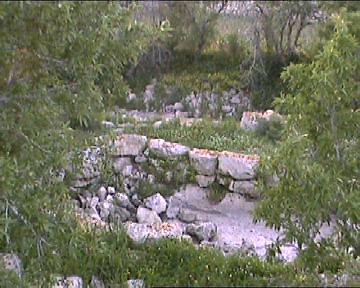
Sadly, for what is considered one of the oldest temples on the
island group, and therefore presumably, one of the
oldest
freestanding structures in
the world, a large section of the temple area remains outside the fence,
and is completely un-protected.
(Other
Maltese Sites)
|